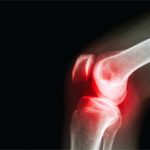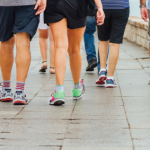(Reuters Health)—Regularly engaging in physical activity, from walking to intense exercise, may help to reduce the risk of chronic low back pain by, as much as 16%, according to a new review of previous studies.
In the past, it hasn’t been clear whether physical activity staves off low back pain, or people without back pain are more likely to be active, the researchers write in the British Journal of Sports Medicine. To help determine which comes first, the review team analyzed data from 36 studies that followed nearly 160,000 people over time who didn’t have back pain at the start.1
“Systematic reviews of clinical trials suggest that exercise reduces low back pain intensity and its recurrence. In addition, the current review suggests that exercise or other leisure time activity also protects against developing chronic low back pain,” lead author Dr. Rhaman Shiri, a researcher with Finnish Institute of Occupational Health in Helsinki, tells Reuters Health by email.
To standardize definitions from the various studies, Shiri and a colleague counted any non-work-related physical effort, including walking and climbing stairs, as physical activity in addition to sports or other forms of intentional exercise. People were considered active if they engaged in such physical activity at least once or twice a week for at least 30 to 60 minutes, or if they were in the middle or high end of total physical activity within their study group.
The researchers found that for moderately or highly active people, the risk of developing chronic low back pain was 14% and 16%, respectively, lower compared with people in the least-active category.
Chronic low back pain was defined as pain that lasts for three months or more, or pain for more than 30 days within the previous 12 months.
For acute or occasional low back pain, however, physical activity levels didn’t seem to make a difference in risk. The same was true of hospitalizations or disability leave related to low back pain.
Limitations of the review, the authors note, include the fact that some studies did not account for factors that might influence the results, such as work-related physical exertion, depression or smoking, all of which are associated with both lack of physical activity and risk of low back pain.
There were also too few elderly or very young adults to determine whether the apparent protective effect of physical activity is true for all age groups. Older people are more likely to be inactive as a result of back pain, for example, the authors point out.
People are becoming more and more aware of the need for activity, Dr. Joel Press tells Reuters Health in a phone interview.
“We were meant to move. We were not meant to be stagnant in any way, so I think this study does confirm that. It’s a big study where they looked at a lot of people,” says Press, who is physiatrist-in-chief at the Hospital for Special Surgery in New York.
Usually, Press tells people who already have back pain to cut down on the sitting and increase movement with low-impact activities, such as walking.
“Generally lower impact, walking type things are probably the starting point. Swimming is another low impact activity that puts less load on your back, but you’re still getting a lot of cardiovascular fitness and movement with it,” said Press, who was not involved in the current study.
It may be best to avoid starting out with sports that have a lot of twisting and turning, such as golf, baseball and tennis unless you take precautions to try not to get into a position where you’re going to make it worse, he noted.
“I think the biggest thing is, if you’re doing an activity and every time you’re doing it the pain intensifies while you’re doing the activity, or even afterward, you’re worse off than you were before,” Press says. “If somebody does an exercise and they’re a little sore right afterward, but by later that day they feel fine, and the next day they’re no worse, they feel fine, that’s a green light—go ahead, you’re doing okay.”
Reference
- Shiri R, Falah-Hassani K. Does leisure time physical activity protect against low back pain? Systematic review and meta-analysis of 36 prospective cohort studies. Br J Sports Med. 2017 Jun 14. pii: bjsports-2016-097352. doi: 10.1136/bjsports-2016-097352. [Epub ahead of print]

